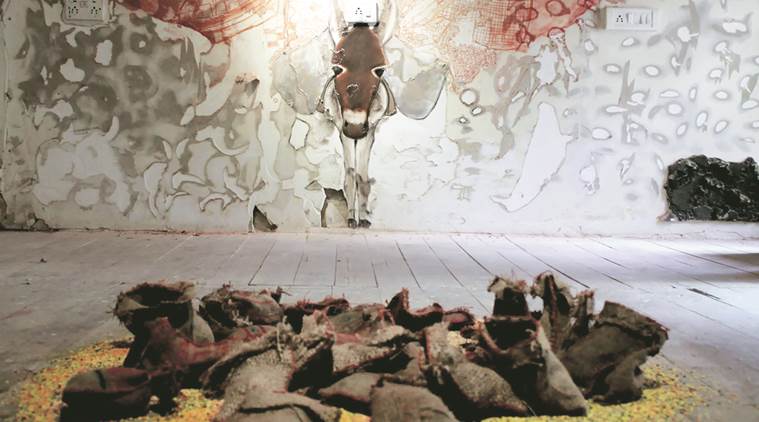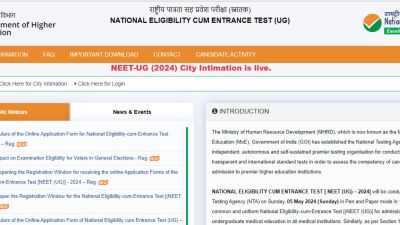- India
- International
Portraits from the Margins
Artist Ranjeeta Kumari’s solo exhibition speaks for all those whose stories are invisible in the mainstream.
 Ranjeeta Kumari’s work Caravan.
Ranjeeta Kumari’s work Caravan.
The story of “Labour of the Unseen”, Ranjeeta Kumari’s first solo show at Clarke House Bombay, begins in Patna’s Harijan colony, better known as Domkhana. Located just behind the Patna Museum of Art and a few short steps away from Patna College of Arts and Crafts, this colony is an informal settlement of the formerly untouchable caste, known as the Doms.
Growing up here, with a father who was a vocal and active Marxist, Ranjeeta was plagued by a number of questions about what made only certain works worthy of being “seen” or “recognised”. Why, for instance, were the lovingly-sewn quilts made by her mother and other women in the community invisible to arbiters of taste, and why were the expertly-crafted furniture, toys and ritual objects created by the cane-weavers in the neighbourhood, categorised as “petty crafts”? This preoccupation with the many forms of labour that go unnoticed and art that goes unappreciated has resulted in her powerful exhibition at Clarke House, which ends on September 29.
The show opens with a series of watercolour paintings of the donkey. Weighed down under sacks of construction material and with its fore and hind legs tied together to prevent escape, this animal is a common sight across the country. It would, in fact, be fair to say that much of this country has been built on the back of this humble beast of burden. By placing the donkey at the centre of these paintings, Ranjeeta is drawing attention to the work done by all the unacknowledged workers who are building our cities and our urban way of life. This might be a fairly obvious way to state a position, but it successfully sets the tone for the rest of the exhibition where, little by little, the artist builds a picture of the great masses of workers who never get the spotlight in the larger narrative of the nation. In a subversive move, the artist refuses to present us with actual portraits of these workers; she makes us see these people through the tools they use or the objects they leave behind — whether it’s the series of photographs featuring tools, such as sewing machines and pliers or the embroidered quilt made by her mother or the towers made of the padded head-rings (vinda) used by construction workers.
The need to tell the stories of these workers is almost a personal project for the 33-year-old artist. “I have seen what it means to be a landless labourer, having grown up in Patna and lived in Delhi and Mumbai and other cities,” she says, using the word haashiya (marginalised) to describe them. This word is part of her political inheritance from her father, a Marxist. “He has never accepted the discrimination that Dalits face and it’s his ideas that formed my political opinions as I was growing up,” she says. It was on her father’s insistence that she and her five siblings were educated, even when their neighbours spoke out against the need for higher education. “My father has always believed that we can access a better life through education,” says Ranjeeta, who did her BFA at Patna College of Arts and Crafts and MFA from Shiv Nadar University in Delhi.
There is a rawness in Ranjeeta’s works that comes not only from the issues she addresses, but also through her choice of material. Jute sacking, abandoned vindas and the humble pochha cloth — all of these are allowed within the frankly elite space of an art gallery without much attempt on the part of the artist to “pretty” them up in order to make them more palatable and consumable — a choice that clearly conveys the artist’s interest in breaking down notions about what is or isn’t worthy of being associated with “art”. As she explains, “I don’t have a talent for writing or for getting up on a podium and speaking about the issues that concern. All I can do is make my art speak for me.”
More Lifestyle
Apr 24: Latest News
- 01
- 02
- 03
- 04
- 05


































